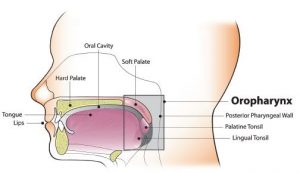Header logo
header top contact widget
Blog Archives
Recent Posts
Categories
Archives
- September 2024
- August 2024
- July 2024
- June 2024
- May 2024
- April 2024
- March 2024
- February 2024
- January 2024
- December 2023
- November 2023
- October 2023
- September 2023
- August 2023
- July 2023
- June 2023
- May 2023
- April 2023
- March 2023
- February 2023
- January 2023
- December 2022
- November 2022
- October 2022
- September 2022
- August 2022
- July 2022
- June 2022
- May 2022
- April 2022
- March 2022
- February 2022
- January 2022
- December 2021
- November 2021
- October 2021
- September 2021
- August 2021
- July 2021
- June 2021
- May 2021
- April 2021
- March 2021
- February 2021
- January 2021
- December 2020
- November 2020
- October 2020
- September 2020
- August 2020
- July 2020
- June 2020
- May 2020
- April 2020
- March 2020
- February 2020
- January 2020
- December 2019
- November 2019
- October 2019
- September 2019
- August 2019
- July 2019
- June 2019
- May 2019
- April 2019
- March 2019
- February 2019
- January 2019
- December 2018
- November 2018
- October 2018
- September 2018
- August 2018
- July 2018
- June 2018
- May 2018
- April 2018
- March 2018
- February 2018
- January 2018
- December 2017
- November 2017
- October 2017
- September 2017
- August 2017
- July 2017
- June 2017
- May 2017
- April 2017
- March 2017
- February 2017
- January 2017
- December 2016
- November 2016
- October 2016
- September 2016
- August 2016
- July 2016
- June 2016
- May 2016
- April 2016
- March 2016
- February 2016
- January 2016
- December 2015
- November 2015
- October 2015
- September 2015
- August 2015
- July 2015
- June 2015
- May 2015
- April 2015
- March 2015
- February 2015
- January 2015
- December 2014
- November 2014
- October 2014
- September 2014
- August 2014
- July 2014
- June 2014
- May 2014
- April 2014
- March 2014
- February 2014
- January 2014
- December 2013
- November 2013
- October 2013
- September 2013
- August 2013
- July 2013
- June 2013
- May 2013
- April 2013
- March 2013
- February 2013
- January 2013
- December 2012
- November 2012
- October 2012
- September 2012
- August 2012
- July 2012
- June 2012
Know HPV & Connection To Oral Health
Posted on Oct 26, 2017 by William J. Claiborne, DDS MS
An estimated 20 million Americans are infected with HPV, the human papilloma virus. HPVs are a group of more than 200 viruses with 40 types easily spread through direct sexual contact, including vaginal, anal, and oral sex.
The spread of HPV is said to be at an ‘epidemic’ level. Thus, the Centers For Disease Control & Prevention now recommends that 11 – 12 year olds receive an HPV vaccination. Being vaccinated before becoming sexually active can lower one’s risk of being infected by HPV types and several types of cancer HPVs are known to cause.
Virtually all cases of cervical cancer are caused by HPV. In the 1980’s, HPV was attributed to around 16 percent of mouth and throat tumors. Within two decades, that figure had increased to nearly 75 percent. It’s been predicted that HPV-related mouth and throat cancers will outnumber cervical cancer by 2020.
Oropharyngeal cancers include malignancies of the tonsils, soft palate, base of the tongue and throat. HPV is commonly transferred through genital contact but HPV spread through oral sex is what increases the risk of mouth and throat cancers. (https://www.cancer.gov/about-cancer/causes-prevention/risk/infectious-agents/hpv-fact-sheet)
Other factors that can heighten the risk that HPV will develop into cancer include:
- Smoking or chewing tobacco (increases oropharyngeal cancer risk)
- Having a weakened immune system
- Having many children (increases cervical cancer risk)
- Long-term oral contraceptive use (increases cervical cancer risk)
- Poor oral hygiene (increases oropharyngeal cancer risk)
- Chronic inflammation
While the use of condoms can reduce HPV transmission, condoms do not give complete protection against the infection because areas not covered by a condom can become infected.
To date, there are no FDA approved HPV detection tests for men. While recommended screening methods do not currently exist, HPV infections can be detected by testing cell samples to see if they contain viral DNA or RNA. Research is continuing to look for ways to make early detection easier.
When it comes to oral cancer, alert us immediately if you experience any of the following symptoms that do not clear up within two weeks:
- Have difficulty swallowing
- Have lumps in the neck
- Experience pain in the mouth or ear
- Notice unusual spots inside the mouth (including the tongue) or on the lips
Do NOT wait until your next check-up to have these evaluated. Call 828-274-9440 for an immediate appointment.
Dental Fear? We Provide Patient Comfort In Many Ways!
Posted on Oct 18, 2017 by William J. Claiborne, DDS MS
I have a friend whose wife is a notorious backseat driver, and she freely admits it. Her husband, actually a good driver, has become used to her ‘guidance’ when they’re on the road. She explains it like this: “When I see brake lights suddenly appear in front of us as we’re going seventy miles an hour, I don’t know that his foot is on the brake pedal, ready to respond. All I know is the urge inside of me to warn him. He knows I can’t help it.”
I agree. We all react to certain things automatically. When some people see a spider for instance, they may become fearful and want to flee. Other people react to seeing a spider by rolling up a newspaper, ready to eliminate the intruder.
When it comes to dental fear, different people have different levels. Some of our patients are very relaxed in our office, from the moment they walk in and throughout treatment. Others are fine until they are seated in the treatment chair. Still, others are nervous and uneasy the entire time.
Periodontal (gum) disease is the result of an accumulation of oral bacteria. It is also the leading cause of adult tooth loss. As a Periodontist, I find that most individuals have developed gum disease because they were too afraid of having regular dental care. Many avoid going to the dentist for years, only ‘giving in’ when something becomes so painful they can no longer delay treatment.
Dental fear and anxiety are often the result of an unfortunate experience in a dentist’s office that made the person feel out of control and trapped. I know this can go deep. I’ve heard patients tell how a dentist continued to work on them even when they’d told him or her they were not numb. I’ve heard patients tell me about being held down in a treatment chair as a child. And, I’ve heard patients tell me they have no idea where their fears came from, yet smells and sounds trigger sweating or a more rapid heartbeat.
If you experience these feelings associated with dental visits, there is nothing ‘wrong’ with you. It’s likely your individual response to something that makes you feel vulnerable because you’ve either heard people relay experiences of discomfort or have experienced it yourself, it’s normal to anticipate pain – sometimes even before being touched.

Get pampered in our Reception area.
Perceived pain can be just as real to some people as actual pain.
In our office, patient comfort is a priority at every visit. We have even designed our reception area to pamper you from the moment you enter. Patients in this area can enjoy a selection of gourmet coffees, cable television and WIFI connection. The seating is comfortable and our front office staff are attentive to your needs.
We offer a private consultation room for patients as well. In this room, we can discuss your treatment and answer your questions in a comfortable setting. This allows patients to become better informed about their treatment needs and options versus communicating while they are seated in a treatment chair.

Enjoy beautiful, relaxing views from our surgical suite.
Our surgical suite offers a rather unique setting for a Periodontal office. A large window provides beautiful mountain views, very soothing to our patients. In addition, we offer oral sedation as well as I.V. sedation (twilight sleep) for most procedures, if desired.
Oral sedation is a pill that helps patients relax. It also has an amnesiac effect, leaving most with little or no memory of treatment afterward. I.V. sedation places the patient in a deeper sedative state, also erasing memory of the procedure. It is administered by a doctor of anesthesiology for optimal comfort and safety. With both, patients are monitored with advanced safety equipment throughout treatment.
Our entire staff provide a unified team, each bringing a sincere level of compassion and commitment to excellent care. While the doctors involved in your care are top-notch, I must admit that our staff are the pros at making our patients feel truly pampered.
When patients realize that our goal is to provide exceptional care in TOTAL comfort, they relax. When they experience this, they relax even more. When they experience this more than once, a sense of trust is born. When patients trust us, they feel they no longer need to avoid dental care. Like everyone, fearful patients desire a healthy, confident smile. Once the obstacle of fear is removed, their ability to achieve that is greatly heightened.
If you or someone you know has fear that has prevented needed or desired dental care, schedule a consultation appointment. This will take place in our private consultation room. Here, we can discuss your needs and concerns and have your questions answered thoroughly. From there, you can determine what pace is best for you.
Call 828-274-9440 to learn more. Our friendly telephone staff will make you feel good from the very beginning!
Healthy Gums Important For Moms-To-Be
Posted on Oct 10, 2017 by William J. Claiborne, DDS MS
If you followed any of the AMC network’s seven seasons of “Mad Men,” you likely watched episodes where the pregnant wives were not only drinking cocktails, but smoking cigarettes. This is shocking today. Yet in the 1960’s, the decade in which the series took place, it was fairly commonplace.
Times have changed. Today, we not only know about the hazards of smoking and alcohol for adults in general, we know that whatever a mom-to-be consumes can pass through to her unborn baby. Being pregnant in this decade comes with a long list of what to avoid during pregnancy. This includes dietary restrictions, medications, fumes, and especially smoking and alcohol.
We now have greater awareness when it comes to what may be potentially harmful to a developing fetus. An often overlooked hazard for its potential harm to unborn babies is that of periodontal (gum) disease. Fortunately, a growing awareness among the medical field is cautioning pregnant females to keep their gums in healthy shape for the good of their smile and their baby.
For years now, studies have shown that women with periodontal (gum) disease are at higher risk for pre-term babies or low-birth weight babies (babies born with a birth weight of less than 5.5 lbs.). Babies born under these circumstances are at greater risk for long-term health problems, including delayed motor skills, social development and learning disabilities. Additionally, a baby born 3 weeks or more prior to its due date can have similar complications in addition to respiratory problems, vision and hearing loss and digestive problems.
Periodontal disease is an inflammatory condition, resulting from an overload of bacterial accumulation in the mouth. This infectious bacteria can attack gum tissues and the bone structure that supports teeth. Like many diseases in our bodies, gum disease begins without obvious warning signs. Once symptoms emerge, they include tender gums, swollen gums, gums that bleed when brushing, gums that pull away from teeth, persistent bad breath and teeth that become loose. While these signs should create a sense of urgency for anyone who experiences them, responding to them is especially important during pregnancy.
Gum disease is the nation’s leading cause of adult tooth loss and is linked to other serious diseases, such as heart disease, stroke and diabetes.
According to the Centers for Disease Control & Prevention (CDC), medical and dental communities agree that maintaining good periodontal health during pregnancy is important. If you are pregnant or planning to become pregnant, stay current on your dental check-ups and cleanings. Also, be committed to a thorough at-home oral hygiene regimen. This includes twice-daily brushing, daily flossing, and regular dental check-ups.
This is also supported by the American College of Obstetricians and Gynecologists, who now encourage pregnant women to achieve and maintain good oral health. In addition to regular dental cleanings during pregnancy, watch for signs of gum disease since hormonal levels during pregnancy make you more susceptible to gum problems, including Pregnancy Gingivitis (which are similar to gum disease symptoms). If signs of gum disease are present, non-surgical periodontal therapy is safe for pregnant women and can improve gum health.
Through all phases of your pregnancy, make oral hygiene a priority. If you are behind on dental check-ups, seeing a Periodontal specialist can help to reduce your risk for adverse pregnancy complications. This will also help to reduce your own risk for health problems while you support a safe pregnancy and healthy baby.
Gum disease can trigger systemic inflammation in the body, resulting in a higher risk for serious health problems. In addition to pre-term, low birth weight babies, these include heart disease, stroke, high blood pressure, some cancers, arthritis, diabetes and impotency.
To learn more about gum health as it relates to pregnancy, visit the web site of the American Academy of Periodontology (AAP).
https://www.perio.org/consumer/gum-disease-and-women
To schedule an examination, call 828-274-9440.
Before & After Sedation Instructions
Posted on Oct 04, 2017 by William J. Claiborne, DDS MS
At Biltmore Periodontics, we pride ourselves on providing optimal safety and comfort to our patients, for every appointment and regardless of the procedure. For some procedures, patients are sedated. Typically, this occurs through “twilight sleep,” which is delivered intravenously (I.V.) by a doctor who is a Board Certified Anesthesiologist, Dr. Brad Stone.
I.V. Sedation places patients in a sleep-like state throughout the procedure. Too, it creates an amnesiac effect so there is no memory of the procedure afterwards. Throughout, the patient is closely monitored by Dr. Stone who uses specific safety equipment. This includes several monitors: EKG (heart), blood pressure, pulse, exhaled carbon dioxide and oxygen saturation.
The sedation process includes instructions both before and after. Dr. Stone will call you prior to your procedure to review your medical history. During this conversation, he will explain sedation and answer any questions.
Following these instructions will help you enjoy a optimal comfort with a quick recovery:
Instructions For BEFORE You Are Sedated
• Eating – No food or any type of dairy product after midnight. In cases scheduled for later the next day, you may be allowed a light meal (example: toast, NO fatty foods) for up to six (6) hours before the procedure. It is critical your stomach is empty by the time of the procedure.
• Drinking – Moderate amounts of clear liquids (water, juice, Pedialyte, Gatorade, soda) can be consumed up to three (3) hours prior to your appointment.
• Attire – Wear loose, comfortable clothing. With colder weather, layering is best. For children, a ‘pull-up’ may help with ‘accidents.’
• Medications – Unless specifically advised, it is recommended to take all medications as prescribed with a small amount of water.
• Transportation – No patient who receives sedation or anesthesia is allowed to operate a vehicle following discharge from our dental office! All patients must have a responsible adult stay with them until they are fully recovered.
Instructions For AFTER You Are Sedated
After you are released from our office, the most important thing you can do is to return home and REST. Giving your body a chance to recover after having anesthesia is best achieved through resting.
Adults
Take your time when moving. Use help or assistance as much as possible. As you move from lying to sitting or sitting to standing, move slowly. If you experience dizziness, lie or sit back down and rest. When climbing stairs, have someone help and assist you. Remember also…
• No driving for the remainder of the day.
• Avoid operation of mechanical or electrical machinery/devices.
• Avoid making any important decisions or signing important documents.
• Avoid consuming alcoholic beverages and/or smoking.
• Avoid any unaccompanied activity.
Children
Children who have been sedated should be carefully monitored by a responsible adult for 4 hours after returning home.
• No climbing, running or riding bicycles for the rest of the day.
Medications: Resume taking prescribed medications once you are drinking fluids. If you receive prescriptions for the procedure, take those as directed. Over-the-counter pain relievers such as Tylenol or Motrin are allowed and may be helpful.
Eating & Drinking: Liquids may be consumed as soon as possible following sedation. Begin with frequent small quantities of clear fluids (such as water, juice and soda). Increase your diet as desired depending on how you feel.
In addition to instructions for sedation, your procedure may include specific guidelines you should follow. We will review those with you carefully. It is our goal to help you achieve an optimal treatment outcome with the highest level of safety and comfort.
Our team is also available to assist you prior to or following any procedure. Call 828-274-9440. If after-hours, our answering machine will provide instructions on how to reach us.


